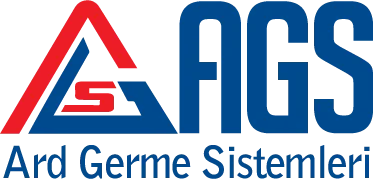Prestressed Concrete Theory

Prestressing is a technological method used to strengthen concrete. Externally applied loads induce internal stresses (forces) in the concrete during the manufacture and life of a reinforced concrete element. Concrete is prestressed against these anticipated stresses.
There are two basic PRESTRESSING methods: Pre-Tensioning and Post-Tensioning.
Prestressed Prestressed Concrete
Pre-stressing is often associated with Precast concrete. The prefix "Pre" refers to the pre-stressing steel that is tensioned before the concrete is poured. In this method, high-strength steel strips or wires are first compressed and tensioned between the struts, and then the concrete is poured around the steel.

When the concrete reaches a certain strength, the ends of the steel members are cut between the piers to transfer the prestressing forces to the concrete. This process is typically carried out in precast plants and the completed prestressed concrete member is transported to the job site and assembled.
Post-Tensioned Prestressed Concrete

Another method of pre-stressing concrete is called Post-Tensioning. As can be understood from the prefix "Post-Tensioning", it means that the pre-stressing steel is stretched after the concrete is poured and the concrete reaches sufficient strength. Instead of preparing and stretching the high-strength steel between the piers in the precast facility as in pre-tensioning, the assembly of the steel element is done at the contractor's manufacturing site after the completion of the mold, concrete and iron manufacturing.
High strength prestressing steel is placed in sheathing or channels and specially designed anchor equipment is placed on the concrete at the ends of the prestressing steel to transfer the load. When the concrete reaches sufficient strength (min. 75% of its ultimate strength), the steel is tensioned to create prestress in the concrete.
Post-tensioning has all the advantages of pre-tensioning and allows fabrication to be done anywhere, including in the final location of the structure (including cast-in-place). It has many advantages over pre-tensioning.

To understand the fundamentals of prestressed concrete, it is important to be aware of the structural properties of steel and concrete. Concrete is very strong in compression but relatively weak in tension.
A concrete member under load deflects (tries to rotate). In a simply supported beam (as shown in Figure 1.3) this deflecting causes compression at the top and stresses below the middle section of the concrete member between the supports (the unsupported section - the middle of the span). In continuous beams (i.e. where the concrete and steel are continuous over one or more internal supports), stresses generally occur in the middle section of the member (the unsupported section) at the bottom and at the top of the supporting elements (columns) (Figure 1.5)
Since concrete cannot withstand tension for long, fractures (cracks) may occur in areas where tension occurs.
If no reinforcement is placed in the concrete, the concrete will succumb and break at these tension-stress points (Figure 1.4).

In classical reinforced concrete productions, reinforcing steel bars are placed in these areas to resist stresses and control fracture (cracking), see Figure 1.5. In non-prestressed reinforced concrete productions, the structure is designed with the assumption that the concrete will crack and most of the stresses will be carried by the steel bars (reinforcements).
Prestressing steel can be added to a structure or element to provide a force that will resist the stresses created by loading, to counteract some of the tensile force in the concrete. This countering force is achieved by placing the prestressing steel in a beam or slab along a section.
The profile of the steel is typically at a high point above the supports (column or wall) and at a low point at or near the center of the span (Figure 1.6). When a prestressing force is applied to the prestressing steel placed in this manner, it produces a lifting force along the tendon length and line, thus preventing movement due to loading. In addition, the tension of the tendons, which are also stressed by the application of the prestressing force in the areas where the anchor is located, counteracts some of the stress on the concrete element.
The amount of uplift force will vary depending on the amount of prestressing steel used and the location profile (line) of the tendons. The designer can utilize both factors (amount and profile) to achieve the desired uplift level.



